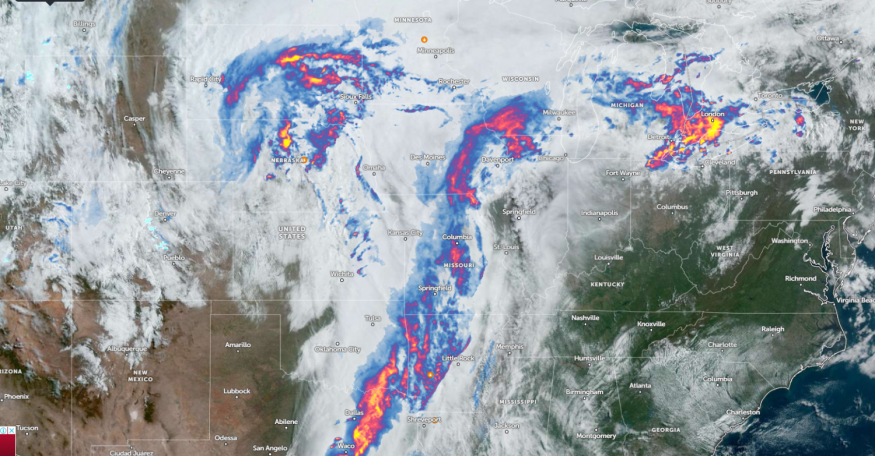Parts of the U.S., particularly Southern US, are vulnerable to tornado threats. Early preparations can help people become safer from severe weather.
In recent Nature World News (NWN) reports, portions of the central U.S., especially Oklahoma and Texas, have experienced severe weather risks from hail, tornadoes, flooding, and thunderstorms.

Staying updated with Tornado Watch and Warnings can avoid potential weather risks, and it will be a lifesaver for many Americans, including knowing where to evacuate.
Staying informed and aware
According to the National Weather Service report, preparing for severe weather can minimize potential weather impacts. Tornado advisories are essential to provide information about the development of severe thunderstorms, including severe weather.
When there is a tornado threat, staying home until the weather improves is best. Having disaster plans is helpful for communities and households.
Limiting outdoor plans is advisable during severe weather threats, avoiding potentially being stranded in tornadoes or hail conditions.
Looking for secure or safe areas
Shelters are essential for every household during severe weather impacts. Understanding where to evacuate can prevent potential risks. Here are some of the potential areas to evacuate during severe weather:
- Basements
- Safe room
- Storm cellars
- Nooks of staircase
Knowing the safe areas can reduce the potential dangers, especially nighttime tornadoes. Avoiding windows, doors, cabinets, and fragile materials is best.
Covering heads is important when evacuating secure areas to avoid falling debris.
Tornado shelter areas
In a work by a Ph.D student from the Mississippi State University, it has provided tornado shelters in case severe weather has become powerful. Recognizing shelters in every state will help potentially evacuate before tornado threats.
Familiarizing yourself with tornado shelters can minimize the risks. The map also shows color-coded areas that are not considered wheelchair-accessible areas, particularly helpful for mobile homes.
Emergency supplies
Homeowners should prepare for emergency supplies during challenging situations, such as severe weather and tornadoes. People could likely become stranded at homes or inside shelters.
Households should store home emergency kits, including a small one they can bring to shelters. NWS highlights the importance of emergency supplies kits to be more prepared.
The recommended emergency kits are the following:
- First aid supplies, including disinfectant, bandages, and ointment.
- Bottled water
- Canned food with a canned opener
- Rain gear and clothes
- Whistle
- Personal hygiene products
- Battery-powered radio
Read also: Texas-Oklahoma Panhandle Weather: Stormy Conditions, Elevated Fire Concerns Likely this Week
Post-Tornado Preparedness
When severe weather or tornadoes are over, homeowners should remain vigilant for damage to houses and power. Checking homes for potential damage is essential to avoid falling debris or damaged electrical wiring.
Homeowners should also communicate with their family members about their situations after the severe weather threats.
As parts of the U.S. experience severe weather risks and nighttime tornadoes, being prepared is the best way to stay informed and prevent weather dangers.
For more similar stories, don't forget to follow Nature World News.
© 2025 NatureWorldNews.com All rights reserved. Do not reproduce without permission.





